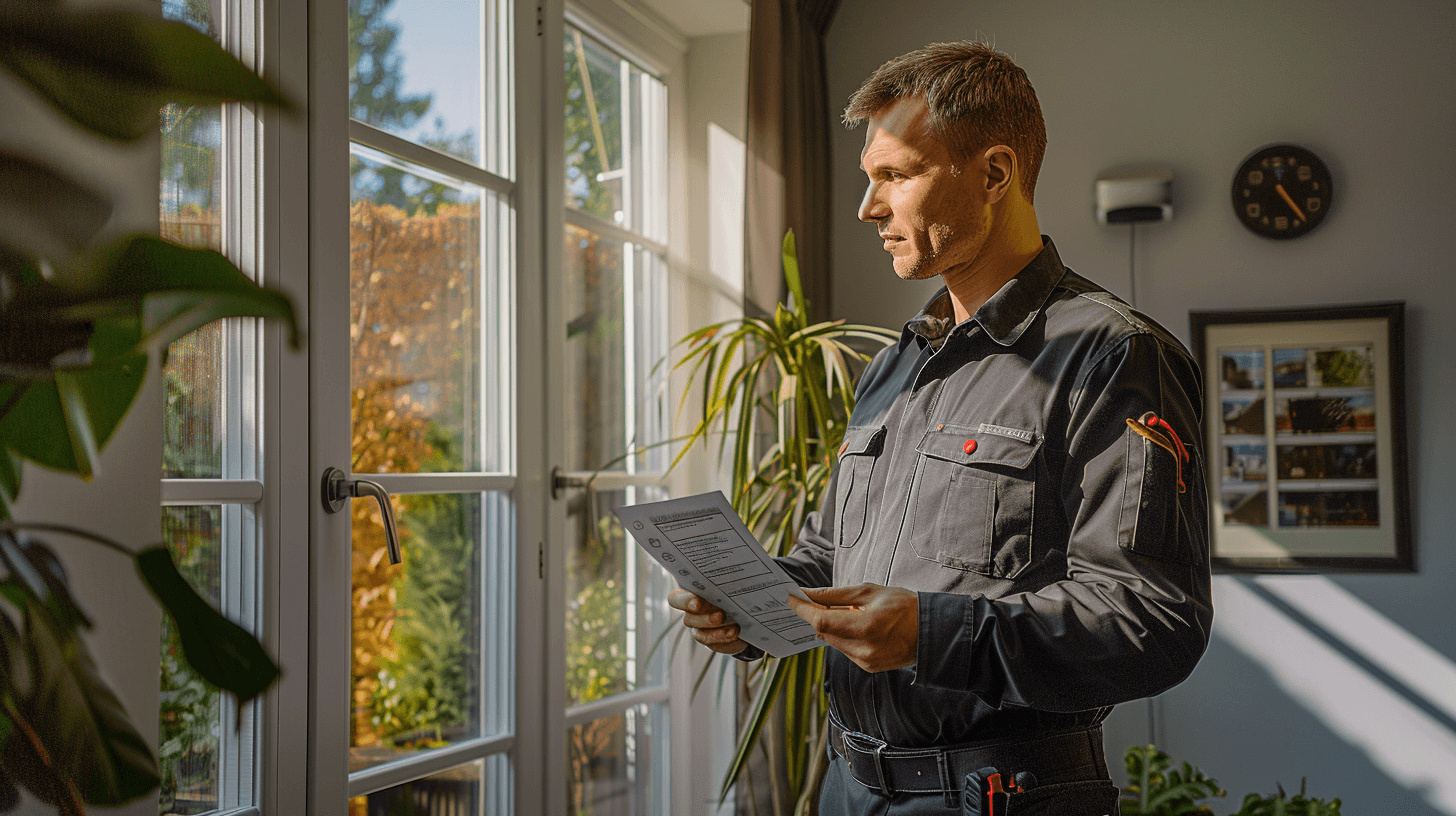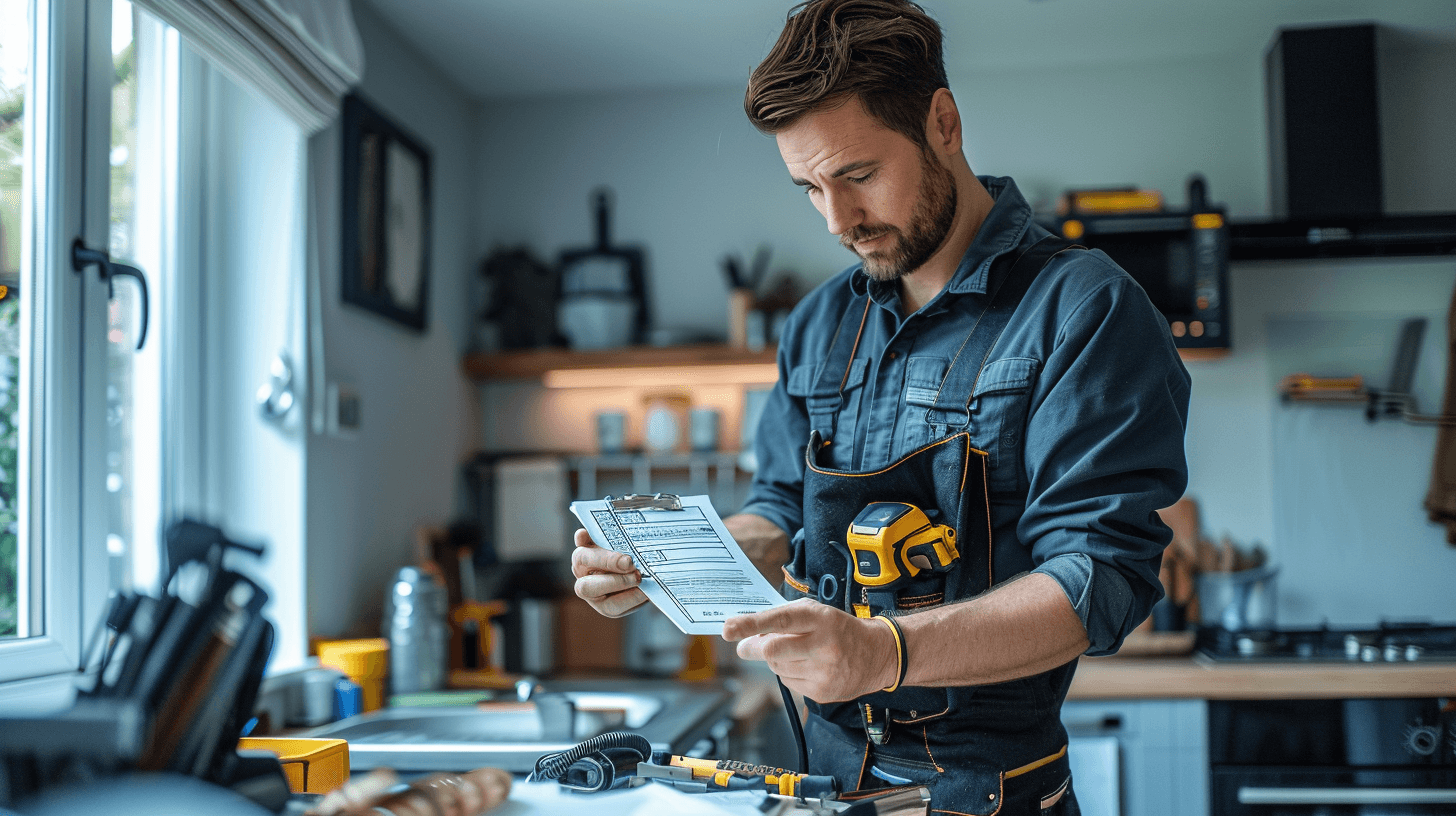 Emergency Property Maintenance Checklist for Homeowners
Emergency Property Maintenance Checklist for Homeowners

Understanding Emergency Property Maintenance Needs
When the unexpected strikes your home, knowing what constitutes an emergency in property maintenance is crucial. Emergencies typically involve situations that pose immediate risks to safety, health, or the structural integrity of your property. These can range from gas leaks and electrical faults to severe water damage or compromised roofing.
Identifying Urgent Maintenance Issues
To swiftly identify maintenance issues that demand immediate attention, familiarise yourself with common emergency signals. These include unusual noises from HVAC systems, signs of water leaks, sparking electrical outlets, or any sudden structural changes. Being vigilant about these signs can be the difference between a quick fix and extensive damage.
Key Elements of an Emergency Maintenance Checklist
A robust emergency maintenance checklist should encompass:
- Exterior and Interior Inspection: Regularly examine your property’s exterior for damages and ensure all interior systems are functioning correctly.
- Safety Systems: Test smoke and CO detectors, fire extinguishers, and security systems to ensure they are operational.
- Utility Checks: Inspect plumbing, electrical, and gas systems for signs of malfunction or deterioration.
- Structural Assessment: Look for cracks or shifts in the foundation, walls, and roofing that may indicate structural issues.
Seasonal Impact on Emergency Maintenance
Seasonal changes can significantly affect your property’s maintenance needs. For instance, winter demands a focus on insulation and heating efficiency, while summer may require attention to cooling systems and weatherproofing. Adapting your emergency maintenance planning to the season ensures your home remains a safe haven all year round.
Assessing Structural Integrity in Emergencies

In the face of an emergency, assessing your property’s structural integrity is paramount. Begin by inspecting for visible signs of damage, such as cracks in walls, uneven flooring, or doors that won’t close properly. Utilise a structural integrity assessment checklist to methodically evaluate key areas of your property.
Immediate Actions for Property Security
Should an emergency occur, immediate actions to secure your property include shutting off utilities to prevent further damage, stabilising any temporary structures, and covering broken windows or exposed areas to protect against the elements. Prioritise these actions based on the immediate safety risks they pose.
Prioritising Emergency Repairs
To maintain structural safety, prioritise repairs that ensure the property’s stability and security. Address foundational issues, significant leaks, and electrical hazards first. Use a prioritised checklist to manage these tasks effectively.
“All Service 4U” and Structural Emergencies
In the event of structural emergencies, “All Service 4U” can provide rapid response services. Their expertise in emergency shutoff valves, backflow prevention, and structural integrity assessment ensures that your property receives the necessary attention swiftly and efficiently. Their 24/7 availability means that help is always at hand when you need it most.
Essential Safety System Checks

Regular inspections are crucial for ensuring the functionality of safety systems within a property. Key systems requiring routine checks include smoke detectors, carbon monoxide (CO) detectors, fire extinguishers, and gas leak detectors.
Frequency of Safety Inspections
Smoke detectors and CO detectors should be tested monthly, and batteries replaced at least once a year or as per the manufacturer’s instructions. Fire extinguishers require an annual professional inspection, alongside a monthly owner check to verify the seal and gauge pressure.
Maintenance Protocols for Safety Systems
To ensure the reliability of safety systems, adhere to a maintenance protocol that includes:
- Visual Inspections: Checking for physical damage or obstructions.
- Functional Tests: Verifying operational readiness through recommended test procedures.
- Record Keeping: Documenting inspections, tests, and any maintenance performed.
Utilising Digital Twins for Record Maintenance
Digital twins, virtual replicas of physical properties, can be instrumental in maintaining accurate records of safety system checks. They allow for:
- Real-Time Updates: Recording inspections as they happen.
- Accessibility: Providing easy access to maintenance history for property managers and maintenance teams.
- Predictive Maintenance: Using data analytics to predict when systems may require servicing.
Seasonal Maintenance Tasks for Homeowners

As the seasons change, so do the maintenance needs of your property. To ensure your home remains in peak condition, specific tasks should be performed in preparation for each season.
Spring and Summer Maintenance Focus
During spring, prioritise cleaning gutters, inspecting the roof for winter damage, and servicing your air conditioning units. Summer is the time to focus on outdoor spaces, ensuring decks, patios, and fencing are in good repair and treating for pests that thrive in warm weather.
Autumn and Winter Weatherproofing
In autumn, prepare your property for colder temperatures by checking insulation, sealing draughts, and servicing heating systems. Winter demands attention to preventing frozen pipes, inspecting the integrity of your chimney and flue, and ensuring your home is equipped for stormy weather.
Advantages of a Seasonal Maintenance Checklist
Utilising a seasonal maintenance checklist offers numerous benefits:
- Preventative Care: Addressing small issues before they become costly emergencies.
- Efficiency: Organising tasks by season ensures nothing is overlooked.
- Safety: Keeping your property safe from seasonal hazards.
“All Service 4U” Seasonal Services
“All Service 4U” provides comprehensive seasonal maintenance services, ensuring your property is prepared year-round. Their expertise in HVAC system servicing, moisture intrusion inspection, and thermal imaging for leaks makes them an invaluable resource for maintaining your home’s safety and comfort.
Engaging Professional Services for Emergency Maintenance

Certain emergency maintenance tasks necessitate professional expertise due to their complexity and the potential risks involved. It is essential to recognise when a situation is beyond the scope of DIY efforts and requires the attention of a skilled contractor.
Identifying Tasks That Require Experts
Tasks that typically require professional intervention include:
- Electrical circuit repairs to prevent fire hazards.
- HVAC system servicing to ensure proper operation and safety.
- Structural integrity assessments following events that may compromise a building’s stability.
- Remediation of hazardous materials like asbestos or lead paint.
The Role of Guarantees and Insurance
Guarantees and insurance are critical components of professional maintenance services. They provide:
- Assurance of Quality: Guarantees offer peace of mind that the work will meet certain standards.
- Financial Protection: Insurance covers damages or accidents that may occur during maintenance work.
Importance of Proper Tools and Compliance
Contractors equipped with the proper tools and knowledge of regulatory compliance are vital for:
- Ensuring the job is done safely and to code.
- Avoiding potential legal issues that can arise from non-compliant work.
Criteria for Selecting a Maintenance Provider
When choosing a maintenance provider, consider the following criteria:
- Qualifications: Verify certifications and training.
- Experience: Look for a proven track record in handling similar emergencies.
- Insurance: Confirm that the contractor has adequate insurance coverage.
- Availability: Choose providers who offer 24/7 services for urgent needs.
- Customer Focus: Select companies known for their commitment to customer satisfaction, such as “Leader Property Maintenance”.
Budgeting for Emergency Maintenance
Homeowners are advised to allocate funds specifically for emergency maintenance to avoid financial strain when unexpected issues arise. A general guideline is to set aside 1-3% of the property’s value annually for maintenance and repairs.
Insurance’s Role in Emergency Expenses
Insurance policies often cover damages caused by unforeseen events, such as natural disasters or accidents. Homeowners should review their policies to understand coverage limits and ensure they are adequately protected against potential emergency maintenance costs.
Estimating Emergency Repair Costs
To estimate the cost of emergency repairs, homeowners can research average prices for common emergency services in their area. Additionally, obtaining quotes from multiple contractors can provide a realistic range of potential expenses.
Financing Options for Emergency Maintenance
For those facing emergency maintenance without immediate funds, financing options are available. “All Service 4U” offers a 0% finance option, allowing homeowners to address urgent maintenance needs without upfront payment, providing financial flexibility during critical times.
Leveraging Smart Home Devices for Emergency Maintenance

Smart home devices play a pivotal role in the early detection and prevention of maintenance emergencies. Sensors can alert you to water leaks, unusual temperature fluctuations, or smoke presence, enabling swift action to mitigate potential damage.
The Role of Property Management Software in Maintenance
Property management software serves as a centralised platform for scheduling, tracking, and documenting maintenance tasks. It facilitates efficient planning and timely execution of both routine and emergency maintenance activities.
Maintaining Up-to-Date Records with Technology
Homeowners can utilise technology to maintain comprehensive records of property maintenance. Digital logs provide a chronological record of repairs, servicing, and inspections, which are invaluable for warranty claims and resale purposes.
Advantages of Digital Twins in Property Maintenance
Digital twins offer a virtual model of your property, allowing for precise monitoring and analysis. They enable:
- Predictive Maintenance: Anticipating potential issues before they escalate.
- Streamlined Operations: Coordinating maintenance efforts with greater accuracy.
- Historical Data Analysis: Reviewing past maintenance to inform future actions.
Implementing Sustainable Emergency Maintenance Practices

Eco-friendly emergency maintenance not only addresses immediate repairs but also contributes to long-term sustainability. Homeowners can implement green solutions by choosing materials and methods that minimise environmental impact.
Eco-Friendly Tips for Emergency Repairs
For emergency property maintenance, consider the following eco-friendly tips:
- Use Sustainable Materials: Opt for recycled or sustainably sourced materials for repairs.
- Energy-Efficient Appliances: When replacing damaged appliances, select Energy Star-rated products.
- Water Conservation: Instal low-flow fixtures during plumbing emergencies to reduce water usage.
Sustainable Solutions for Common Maintenance Issues
Addressing common maintenance issues with sustainability in mind involves:
- Sealing Leaks: Use eco-friendly sealants to improve insulation and reduce energy waste.
- LED Lighting: Replace damaged lighting with LED bulbs for longer life and energy savings.
- Solar-Powered Tools: Utilise solar-powered equipment for outdoor maintenance tasks.
Considering Environmental Impacts in Maintenance
When performing emergency maintenance, assess the potential environmental impacts by:
- Proper Disposal: Ensure hazardous materials are disposed of according to environmental regulations.
- Chemical Use: Choose non-toxic, biodegradable cleaning agents for spill cleanups.
Energy Efficiency and Cost Savings
Energy efficiency is integral to cost-saving in property maintenance. Implementing measures such as smart thermostats and proper insulation can lead to significant reductions in utility bills, especially after addressing emergency issues.
Tenant and Landlord Maintenance Responsibilities

In rental properties, maintenance responsibilities are typically shared between tenants and landlords. Tenants are generally responsible for routine upkeep and minor repairs, such as changing light bulbs and keeping the property clean. Landlords, on the other hand, are responsible for ensuring the property is habitable and safe, which includes addressing structural issues, plumbing, heating, and electrical systems.
Ensuring Early Issue Detection and Tenant Satisfaction
To ensure early detection of potential issues and maintain tenant satisfaction, landlords should:
- Encourage tenants to report maintenance issues promptly.
- Conduct regular inspections of the property, with tenant consent.
- Provide tenants with clear guidelines on how to perform basic maintenance tasks.
Legal Obligations for Emergency Maintenance
Landlords must comply with legal obligations regarding emergency maintenance, which include:
- Responding to emergency repair requests in a timely manner.
- Following health and safety regulations to prevent accidents or injuries.
- Ensuring all repairs are carried out to a satisfactory standard.
Digital Property Management Software for Effective Communication
Digital property management software can greatly enhance communication between landlords and tenants by:
- Providing a platform for tenants to report issues directly.
- Allowing landlords to track maintenance requests and their resolution.
- Facilitating the documentation of all communication and actions taken.
Discerning Between DIY and Professional Emergency Maintenance

When facing emergency maintenance, it’s crucial to discern which tasks are within your capabilities and which necessitate professional intervention. Simple tasks like unclogging drains or resetting tripped circuit breakers can often be handled without expert help. However, complex issues such as repairing gas appliances, addressing major electrical faults, or resolving structural damage should be entrusted to professionals.
Ensuring Safety During DIY Maintenance
To ensure safety when undertaking DIY maintenance tasks, adhere to the following guidelines:
- Always turn off the main power when dealing with electrical repairs.
- Use appropriate personal protective equipment, such as gloves and safety glasses.
- Follow manufacturer instructions for tools and equipment meticulously.
Insurance Implications of DIY Property Maintenance
Before commencing any DIY maintenance, verify that your insurance policy covers such activities. Some policies may not cover damages resulting from non-professional work, potentially leading to significant out-of-pocket expenses in the event of a mishap.
Delegating Complex Tasks to “All Service 4U”
For complex emergency maintenance tasks, it is prudent to delegate to a service like “All Service 4U.” Their certified professionals are equipped with the necessary tools and expertise to safely and efficiently resolve issues, ensuring compliance with current regulations and standards.
Key Components of Regular Property Inspections

Regular property inspections are essential to maintaining the safety and integrity of your home. These inspections should encompass:
- Structural Elements: Checking the foundation, walls, and roof for signs of damage or wear.
- Systems: Ensuring that electrical, plumbing, heating, and cooling systems are functioning correctly.
- Exterior: Examining siding, windows, and doors for integrity and proper sealing.
- Interior: Looking for any signs of water damage, pest infestation, or other interior issues.
Preventive Measures to Minimise Emergency Risks
Preventive measures are critical in reducing the likelihood of emergencies. This includes:
- Regular Cleaning: Keeping gutters, drains, and chimneys clear to prevent blockages.
- Seasonal Preparations: Weatherproofing your home against the elements for the upcoming season.
- Safety Checks: Testing smoke alarms, carbon monoxide detectors, and fire extinguishers regularly.
Tools and Techniques for Thorough Inspections
Conducting thorough inspections requires a few essential tools and techniques:
- Checklists: Utilise a comprehensive checklist to ensure all areas are reviewed.
- Thermal Imaging: Employ thermal imaging to detect hidden leaks or insulation gaps.
- Moisture Metres: Use moisture metres to identify potential water damage not visible to the naked eye.
Scheduling Regular Maintenance Checks
Creating a schedule for regular maintenance checks involves:
- Calendar Reminders: Set reminders for periodic inspections and seasonal maintenance tasks.
- Maintenance Logs: Keep detailed records of all maintenance activities to track the health of your property over time.
- Professional Assessments: Schedule annual inspections with a qualified professional to identify issues that may not be apparent to homeowners.
Reaching Out to “All Service 4U” for Emergency Maintenance

For immediate assistance with emergency property maintenance, homeowners can contact “All Service 4U” through their dedicated support channels. The company offers a streamlined communication process to ensure rapid response to urgent maintenance needs.
24/7 Availability for Urgent Maintenance Needs
“All Service 4U” provides round-the-clock availability to address emergency situations without delay. Their services include:
- Emergency Hotline: A dedicated phone line for urgent maintenance requests.
- Online Request Form: A digital platform for submitting emergency service inquiries.
Ensuring Customer Satisfaction
To ensure customer satisfaction, “All Service 4U” adheres to a strict quality assurance protocol, which includes:
- Qualified Technicians: Deploying experienced and certified professionals.
- Guaranteed Workmanship: Offering satisfaction guarantees on all emergency maintenance work.
- Follow-Up Support: Providing aftercare services to address any subsequent concerns.
Immediate Steps for Homeowners
When facing an emergency maintenance issue, homeowners should:
- Assess the Situation: Quickly evaluate the severity of the issue.
- Secure the Area: Take immediate action to prevent further damage, if possible.
- Contact “All Service 4U”: Utilise the emergency hotline or online form to request professional assistance.
- Document the Issue: Keep a record of the damage and any temporary measures taken, for insurance purposes.

